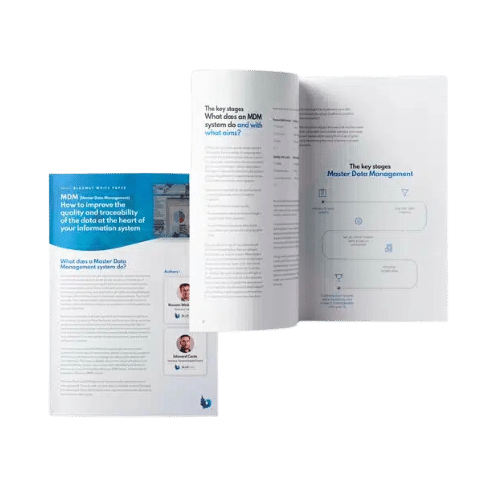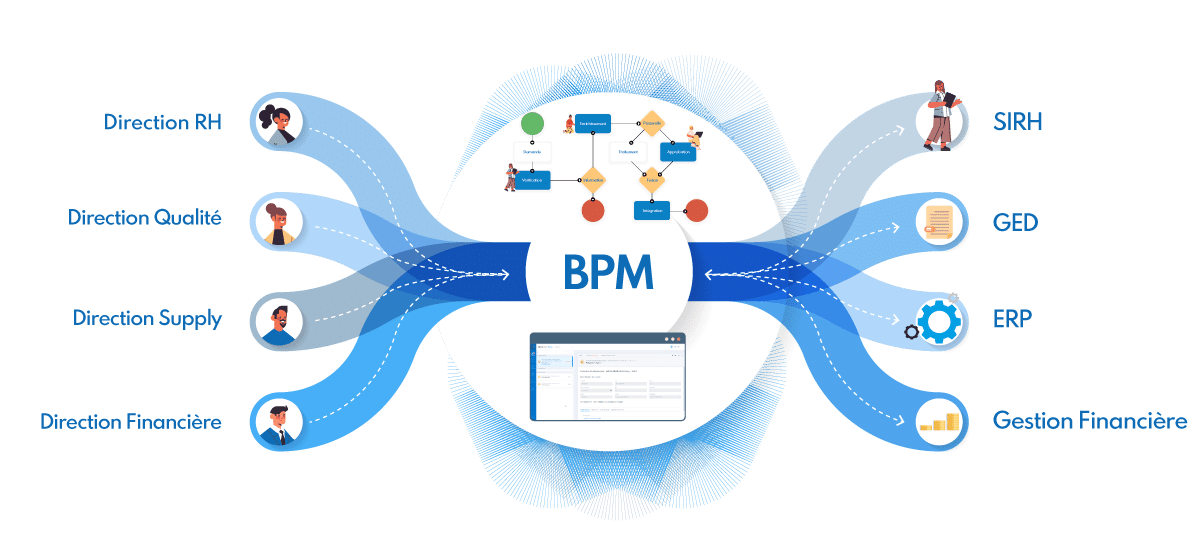The Data Repository: the key to centralizing, harmonizing and governing your reference data at the heart of your information system. Get the most out of your data!
This content on data repositories is part of our Master Data Management dossier.
Information systems are increasingly rich, complex and heterogeneous. Data comes from an ever-increasing number of sources (e-commerce, stores, CRM, accounting/finance software, ERP, production management, etc.), and it is often difficult to determine which data is the most reliable or up-to-date within the company. In order to solve this problem, which is a source of loss of efficiency for the company, the implementation of a single repository grouping together all the data in the Information System is one of the solutions: MDM (Master Data Management).
Data integration is indeed a fundamental issue, and one that needs to be considered in its entirety, taking all the different sources and targets into account: because beyond IS urbanization, it’s all business processes that depend on the quality of data flows, and therefore end-users!
Once you’ve recognized the importance of the quality of your company’s reference data (customers, suppliers, items, etc.), and you know that it is used by different applications, implementing a Master Data Management approach makes perfect sense.
The reference data repositories set up by MDM solutions deliver a number of functional benefits.
Centralize your company's reference data in one place
Manage data life cycle (creation, modification, deletion) and quality rules
Transport this reference data with all related applications
Secure and trace all actions, changes and revisions (history, data lineage, integrity, etc.)
Provide users with a unified view and access to data
Historically, the implementation of a single data repository with an MDM (Master Data Management) primarily concerned companies in very specific business sectors whose legislation required them to have quality and traceability elements for their data (pharmaceutical industry, healthcare sector, banks, mutual insurance companies, etc.).
Today, companies of all sizes and in all sectors have to deal with these same issues, yet lack the human and financial resources to guarantee the success of their projects. With its Phoenix data platform, Blueway offers them a flexible, ergonomic and above all pragmatic solution. With no need to write a single line of code, you can simply set up your own unique repository, which will become your single point of truth.
Deploying one or more data repositories means taking a step back from the management of your reference data. This preliminary step should also enable us to model the data lifecycle, across the company and its various departments. Reference data must not be compartmentalized: it belongs to the whole organization! We recommend a minimum of 5 steps. Defining a data governance policy (roles, objectives, bodies, etc.) is a prerequisite.
First, measure the quality of reference data, using objective, processing and semantic approaches. Assess profiling, completeness, redundancy and homogenization. Next, identify the right performance indicators, both economic (productivity, SLA) and technical. Next, define the scope of data management, involving both business and IT departments. Fourth, initialize the target data by creating a host database and instantiating control and validation rules. Finally, anticipate the rules and processes that will enable data quality to be maintained over time (architecture, interoperability with the IS, management and security rules, etc.).
The use of an Enterprise Services Bus-type solution (application bus) standardizes all exchanges between different applications, without the need for multi-directional, sometimes redundant interfaces, which complicate information system architecture and can lead to spaghetti syndrome. Combined with the data repository, this approach helps guarantee data consistency and integrity, while facilitating accessibility.
Within the Phoenix platform, the MDM module takes advantage of the Data Foundation module’s data transport base.

The Data Governance module of our Phoenix platform is designed to simplify and centralize the creation, management and governance of your data repositories. You can quickly model your repositories, define data quality criteria and automatically generate user interfaces and WebServices for data acquisition and exposure. Repositories are stored in a database, which can be MySQL, SQLServer, Oracle, PostgreSQL, DB2, etc., depending on the customer’s choice.
This module also facilitates data integration by ensuring that data is up-to-date and reliable, thus meeting the requirements of complex information systems. With Data Governance, you can optimize the management of reference data on each business perimeter, and guarantee its integrity and availability throughout the organization.

Mouse-over modeling of your repositories, creation of your business rules, automatic generation of user interfaces.
Data Governance lets you monitor all your data and repository quality indicators.
Repositories connect to various data sources (applications, directories, databases, etc.).
Traceability, uniqueness, deduplication, validation, logging...
At Blueway, we are convinced of the importance of Data & Process interoperability. That’s why our modular Phoenix platform goes beyond MDM capabilities: it integrates Business Process Management, Enterprise Services Bus, Data Catalog and APIM modules to cover every dimension of data management.
This unique combination not only centralizes and manages your data repositories, but also optimizes business processes, standardizes data exchanges and secures APIs. With Phoenix, your data governance strategy becomes agile and easy to implement. By unifying your data and ensuring its interoperability with all your business applications, Phoenix multiplies the value of your data for your entire organization!
Understand the company's specific needs in terms of analysis, decision-making and global operations to guide the integration strategy.